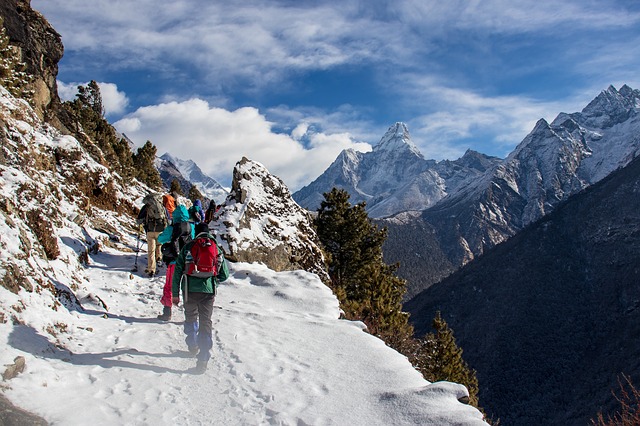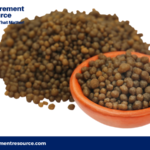The Kedarnath trek is one of the most revered and physically demanding pilgrimages in India. It attracts thousands of trekkers and devotees from around the world who are eager to experience the spiritual and natural beauty of this sacred journey. However, for first-time travelers, the trek can pose numerous challenges, from the difficult terrain to unpredictable weather conditions. Whether you are undertaking the trek for religious reasons or just seeking an adventure in the Himalayas, preparation is key to having a successful and enjoyable journey.
In this blog, we will address some common challenges faced by first-time trekkers on the Kedarnath trek and offer helpful tips on how to overcome them. Plus, we’ll explain how choosing a Kedarnath trek package can simplify the journey for you.
Physical Preparedness for the Trek
Pain Point: Many first-timers underestimate the physical demands of the Kedarnath trek, often finding themselves exhausted halfway through.
The trek involves steep climbs, long walking hours, and the challenge of high altitudes. To avoid exhaustion and injury, it’s important to train your body before setting out. Start a fitness regimen 4-6 weeks in advance to build stamina, strength, and endurance. Cardio exercises, leg-strengthening routines, and hikes on inclined paths will help prepare your body for the demanding terrain.
Tip: Gradually increase your trekking distance and try to simulate the conditions of the Kedarnath trek as much as possible.
Bonus Tip: Many Kedarnath trek packages provide pre-trek training tips and offer guides who can pace your journey, ensuring you don’t push your limits too hard.
Unpredictable Weather and Temperature Extremes
Pain Point: The weather in Kedarnath can change abruptly, leaving trekkers unprepared for sudden rain or snow, especially at higher altitudes.
Temperatures can drop significantly as you ascend, even during summer, and rain or snow can occur unexpectedly. It’s important to pack layers of clothing that allow you to adjust to these temperature shifts. A lightweight raincoat or windbreaker is a must-have for sudden weather changes, and thermal wear is essential for staying warm at higher altitudes.
Tip: Always check the weather forecast before your trek and pack accordingly.
Bonus Tip: If you’ve opted for a Kedarnath trek package, the agency may provide you with updated weather information and ensure you’re prepared for any unexpected conditions.
Acclimatization to High Altitude
Pain Point: Altitude sickness is a common issue for trekkers who do not give their bodies enough time to adjust to the high altitude of Kedarnath.
The sudden drop in oxygen levels as you climb can cause symptoms like headaches, dizziness, and nausea. It’s crucial to give your body time to acclimatize to the altitude by taking regular breaks and resting at different points on the trek.
Tip: If possible, spend a night at a lower altitude before starting your trek to allow your body to adjust.
Bonus Tip: A Kedarnath trek package often includes structured rest stops that help with acclimatization, so you can take the journey at a safe pace.
Overpacking and Carrying Excess Weight
Pain Point: Many trekkers make the mistake of overpacking, which leads to unnecessary weight on their back and makes the trek even more exhausting.
Packing too many clothes, gadgets, and unnecessary items can add extra weight to your backpack. Instead, focus on the essentials: comfortable trekking shoes, lightweight clothing, and a small first aid kit. It’s also a good idea to carry some high-energy snacks like nuts, energy bars, and dried fruits to keep your energy levels up throughout the trek.
Tip: Use a checklist before you pack to avoid taking anything unnecessary. Remember, the lighter your load, the easier your trek will be.
Bonus Tip: If you’ve chosen a Kedarnath trek package, you can have your luggage carried by porters, allowing you to focus on the trek itself.
Inadequate Hydration and Nutrition
Pain Point: Dehydration and lack of proper nourishment are common problems faced by trekkers, especially those who underestimate the demands of the high-altitude trek.
The physical exertion of trekking combined with the high altitude can quickly lead to dehydration and fatigue. It’s essential to drink water regularly, even if you don’t feel thirsty. Carry a refillable water bottle and high-protein snacks like nuts, energy bars, and trail mix to keep your energy levels up.
Tip: Aim to drink at least 2-3 liters of water a day, depending on the trek duration, and snack frequently on energy-boosting foods.
Bonus Tip: Many Kedarnath trek packages provide meals along the way and ensure that water refills are available at key points, making it easier for you to stay hydrated and energized.
Navigating the Trek Without a Guide
Pain Point: First-time trekkers may struggle to navigate the Kedarnath trek, especially in areas with unclear paths or during bad weather.
Kedarnath’s remote location and challenging terrain can make it difficult to stay on the right path without a guide. The presence of a guide not only ensures that you follow the correct route but also provides valuable insights into the local culture, history, and environment.
Tip: Always hire a local guide or opt for a Kedarnath trek package that includes one.
Bonus Tip: A local guide can also help you with navigation during adverse weather conditions and ensure your safety at all times.
Managing the Crowds at Popular Trekking Spots
Pain Point: The Kedarnath trek can get overcrowded, especially during peak pilgrimage season, making it harder to enjoy the tranquility and beauty of the place.
To avoid the worst of the crowds, start your trek early in the morning, before the peak hours. If possible, plan your trek for the off-season, which can offer a quieter, more peaceful experience.
Tip: Try to start your trek as early as possible to enjoy the peaceful surroundings.
Bonus Tip: Many Kedarnath trek packages offer flexible itineraries that allow you to avoid peak crowd times and have a more serene experience.
Inadequate Footwear
Pain Point: Wearing the wrong shoes can lead to blisters, foot pain, and discomfort, making the trek unnecessarily difficult.
The terrain in Kedarnath is rocky and uneven, so it’s essential to wear sturdy, well-fitted trekking shoes. Make sure your shoes have good ankle support and a non-slip sole to help you navigate the challenging paths.
Tip: Break in your shoes before the trek to avoid painful blisters.
Bonus Tip: Many Kedarnath trek packages offer recommendations for proper footwear and even provide shoe rentals if needed.
Not Being Prepared for Medical Emergencies
Pain Point: Health issues can arise suddenly, and being unprepared can lead to dangerous situations.
Altitude sickness, dehydration, and minor injuries are common on the trek, so it’s essential to carry a first aid kit with basic supplies. Know the symptoms of altitude sickness and be ready to descend if necessary. Having the right medical supplies on hand can help you manage emergencies until help arrives.
Tip: Carry a basic first aid kit with pain relievers, antiseptics, and altitude sickness medications.
Bonus Tip: Many Kedarnath trek packages include medical assistance and support, ensuring you’re taken care of in case of an emergency.
Not Respecting the Local Culture and Environment
Pain Point: Some trekkers may inadvertently disrespect the local customs or harm the environment during their trek.
Kedarnath is not just a trekking destination but a deeply sacred pilgrimage site. It’s important to be respectful of the local culture, traditions, and environment. Avoid littering, refrain from making loud noises, and follow the local customs and etiquette.
Tip: Learn about the spiritual significance of the trek before you go and ensure you are respectful of the local people and their customs.
Bonus Tip: A Kedarnath trek package often includes guidelines on local culture and environmental responsibility, ensuring you leave no negative impact.
The Kedarnath trek is a beautiful and rewarding experience, but it does come with its challenges. By preparing physically, packing smartly, and taking the necessary precautions, you can avoid common pitfalls and make the most of your journey.
If you’re looking to simplify your trek and ensure a smoother, safer journey, consider opting for a Kedarnath trek package. These packages are designed to take the stress out of planning and offer professional guidance and support every step of the way. With the right preparation and support, your Kedarnath trek can be an unforgettable and enriching experience.


